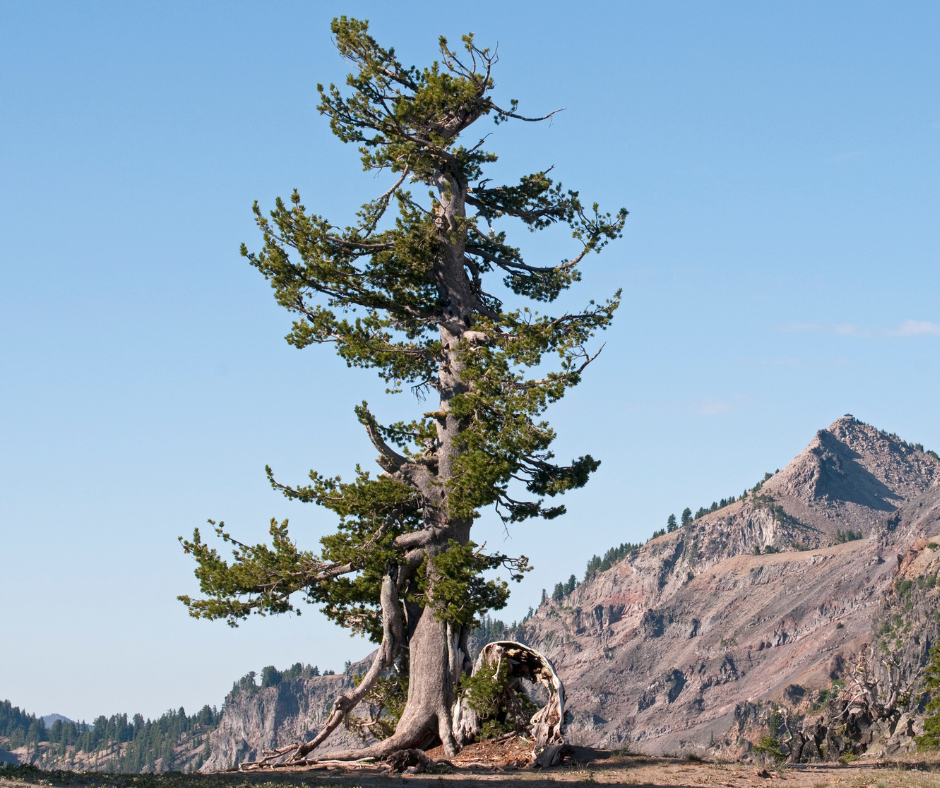Idaho’s very own Charlie Brown Christmas tree
Pinus albicaulis-whitebark pine
If you have ever hiked to higher elevations here in Idaho, sooner or later you are bound to see a rather sparse-looking tree. Often the gnarled, twisted pale gray branches seem to have emerged from crevices between rocks and it is only tree around. Idaho’s Charlie Brown Christmas tree if you will, has existed in the western mountain states of North America and parts of British Columbia for thousands of years. And even the longest-living species makes its home right here in the Sawtooth National Recreation Area.
What’s up with that tree?
Many an onlooker has wondered if the gnarled tree they are admiring is very old, if it is healthy, or if it has been struck by lightning. Simply put, the whitebark pine is a survivor. It has adapted to the harshest of conditions like intense mountain winters, extreme wind gusts, droughts, and fires. The whitebark pine is a tree honored for its longevity and tenacity. In a forest filled with ongoing threats, it is one tree that needs to be acknowledged and protected. Because although this gritty tree has managed to exist as long as it has, it needs our protection and assistance if it is to overcome pesky insects and nasty fungi.
Specifications
In ideal conditions, the whitebark pine can grow to almost 100 feet. It is often the only pine tree found at very high elevations within its range. It is also an important food source for many birds and small mammals, most importantly Clark’s nutcracker (Nucifraga columbiana), which contributes to the species’ seed germination. Other animals that rely on the species as a food source include squirrels, grizzly bears, and American black bears. Elk and blue grouse are often at home among the whitebark pine communities during the warmer months. Even deer and wild sheep will seek shelter beneath these trees on their beds of fallen needles.
Rehabilitation efforts
Currently listed as a proposed threatened species, it’s expected to be declared by the USFWS as threatened (under the Endangered Species Act of 1973), by the end of this year. Among the species’ looming threats, the mountain pine beetle larvae consume the cambium cell layer of the trees after they hatch. Also, white pine blister rust, a fungus that has been around since the 1920s, has been responsible for the demise of 96% of the whitebark pines in northern Idaho and northwestern Montana.
SNRA efforts
The Sawtooth Society volunteer crews led by Deborah Taylor, USFS, North Zone Botanist, Sawtooth National Forest, have been involved with rehabilitation efforts in past years. Most recently, the National Forest Foundation planted seeds on Railroad ridge twice this summer in an attempt to re-establish whitebark pine communities.
What can you do to help?
Efforts such as those mentioned, planting seedlings, and donations to rehabilitation efforts are the most beneficial actions. Read more about recent status updates at Species Profile for Whitebark pine (Pinus albicaulis). To see how you can help the SNRA visit www.sawtoothsociety.org.




